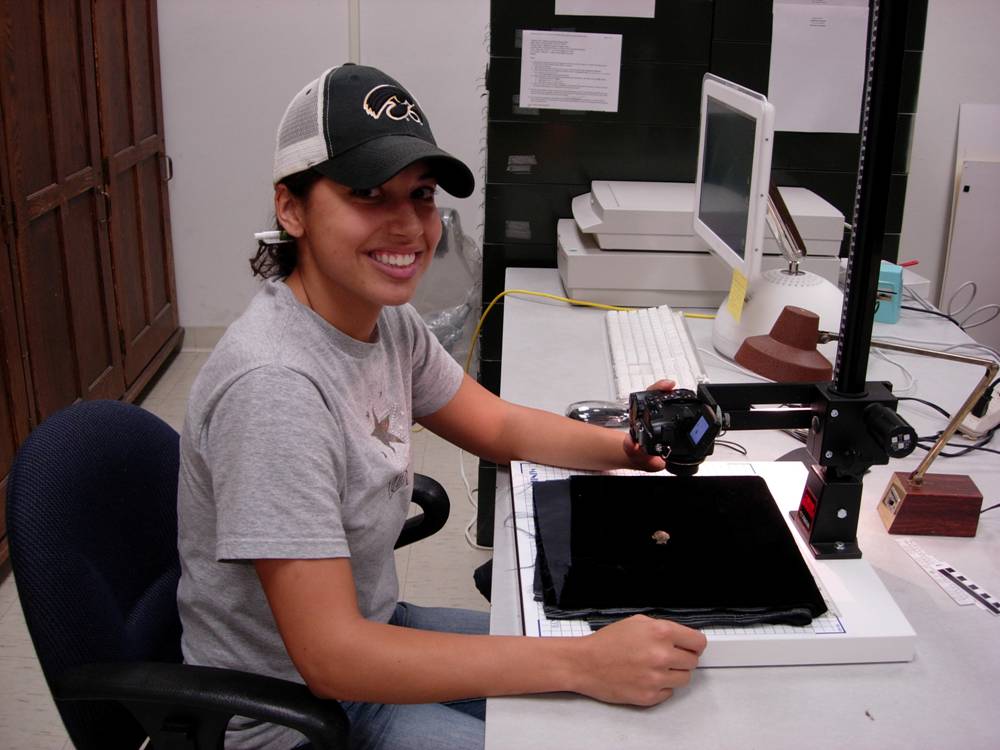
Repository Digitization Project
The University of Iowa Paleontology Repository holds over one million specimens including more than 25,000 type and referred specimens, yet approximately 90% of the collection is uncatalogued, impeding research access. As part of an NSF-funded collection reorganization project (completed 2005), a collection survey identified and prioritized parts of the collection for computerization. A new 3-year NSF- funded computerization project began in April 2006. This new project will involve: 1) computerization of priority collections using SPECIFY to preserve data and make them accessible to researchers and the public; 2) development of partnerships with database projects including the Paleontology Portal, Global Biodiversity Information Facility (GBIF), Neogene Marine Biota of Tropical America (NMITA), and FAUNMAP, to increase visibility of the Paleontology Repository and improve data access; and 3) a Digital Image Project in which existing and new images of type material will be digitized and made available on-line. Priority collections include the Amoco conodont collection, Amoco South Florida collection, midwest echinoderms, Quaternary micromammals, the Paleozoic coral collection, and a stratigraphic collection from now inaccessible localities. An on-line educational resource will be developed using the Amoco South Florida collection. In addition, a pilot study will involve hosting SPECIFY databases for the University of Missouri conodont collection and new collections at the Universidad Autónoma de Santo Domingo (UASD), Dominican Republic. The computerization project will provide employment, training, and collections experience for graduate student research assistants, geoscience undergraduate students and museum studies program interns. Wider dissemination of collections data will increase use of the collection and emphasize the continuing commitment of The University of Iowa to support the stewardship of the collection. Computerization of the Paleontology Repository's major holdings and development of web resources and partnerships with other projects and institutions will greatly increase our research, education and outreach abilities.
-Two half-time graduate research assistants, one curatorial, one IT support, for 3 years
-Partial tuition costs for graduate research assistants
-2 new servers to host the specimen catalogue, images and data sharing facilities
-New shelving for the Midwest Echinoderm Collection
-New computer hardware and software, digital photography and computer supplies
-SEM photography costs for using the UI Central Microscopy Research Facility
-Travel to, and presentation at professional meetings
-Prioritize collections at risk from losing associated data
-Make collections data accessible on the Internet
-Increase research access to collections
-Make digital images available on-line for researchers and fossil enthusiasts
-Link specimen catalogue to community database projects to increase exposure
-Digital preservation of associated printed documentation
-Develop web-based education tools
-Provide training opportunities for undergraduate, graduate, and Museum Studies students
-Digitization and preservation of existing images (digital and printed)
-Photography of all SUI holotype type material (1,349 specimens)

Undergraduate student Mary Bubb works on photographing type specimens
-Request donation of associated digital images from researchers who use SUI specimens
-Accessible online through the Repository website with links to the Specify Collections Database
-Instant access to specimens online to enable informed loan requests
-On-line access to collections too delicate to send on loan by mail
-Collection management benchmarks for specimen audit and conservation
This
page last updated November 28, 2006 HLB |